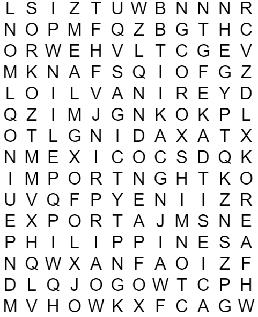
3 minute read
Ribbon Cutting Highlights Major Upgrade and Expansion of SDSU’s Mesonet
On Thursday, August 25th, South Dakota State University held a ribbon cutting event for a newly upgraded Mesonet weather station in Sioux Falls. The event highlighted the effort to install 150+ Mesonet stations across the state.
A mesonet is a network of weather stations that are placed closely together and report every few minutes to capture what meteorologists call mesoscale weather – finer scale, more dynamic weather.
Advertisement
SDSU is being funded by the US Army Corps of Engineers and the National Weather Service to install and maintain stations across the Upper Missouri River Basin to improve monitoring for flood and drought.
Twenty-two of the Mesonet’s stations have already been upgraded. An additional 129 installations and upgrades will take place over the next five years. The expanded Mesonet will put nearly every acre in the state within 20 miles of a station.
The stations will boast improved wind measurements, monitoring of the moisture and temperature profiles of the soil, precipitation reports year-round and more. The stations are also equipped with weather cameras.
The South Dakota Soybean Checkoff has supported the Mesonet Spray Tool that provides updates on weather every 5 minutes with the ability to send weather records by email. The Council has also funded the augmentation of these stations with the sensors needed to report inversions that may cause issues for sprayers.
South Dakota Soybean Executive Director Jerry Schmitz joined Senator Mike Rounds, Governor Kristi Noem, SDSU President Barry Dunn, and others to speak about the positive impact the upgraded and expanded Mesonet will have.
Live and archived data from the Mesonet are available at mesonet.sdstate.edu.
Nathan Edwards, Mesonet Operations Manager and Project Lead, and Jerry Schmitz, SDSA Executive Director
Ribbon cutting and the newly upgraded SDSU Mesonet weather station in Sioux Falls. Pictured in front, from left to right: Reno Red Cloud, Great Plains Tribal Water Alliance board member; Jerry Schmitz, SDSA Executive Director; Col. Mark Himes of the US Army Corps of Engineers; Governor Kristi Noem; Senator Mike Rounds; SDSU President Dr. Barry Dunn; Kevin Low and Marina Skumanich of the National Oceanic and Atmospheric Administration; and Andrew Berg, Sioux Falls City Engineer. Pictured in back, left to right: Elizabeth Wakeman, Great Plains Tribal Water Alliance board member; Dr. Bill Gibbons, SDSU Agricultural Experiment Station Director; Nathan Edwards, Mesonet Operations Manager and Project Lead

Find more information about the SD Mesonet Spray Tool at
MESONET.SDSTATE.EDU/SPRAY
Super SpRoUtS sPonSored by tHe SoUtH Dakota SoYbeAn ChecKofF MeEt SpRoUt, tHe masCot for tHe super sProUtS educatiOnal pRogRam. Super SpRoUtS aImS to pRovide at home educatiOnal acTivitiEs for cHilDren of alL ages. SpRoUt’s goAl is to enSure everyOne kNowS aboUt tHe superPowerS of SoYbeAnS!


ExPorT WorD SEaRcH
in the puzzle.
1. An export is a commodity sold to other countries. 2. An import is a commodity brought into the country. 3. China ranks 1st in US soy imports. 4. Mexico ranks 2nd in US soy imports. 5. Egypt ranks 3rd in US soy imports. 6. Japan ranks 4th in US soy imports. 7. Soybean oil is the oil that is extracted from the soybean. 8. Korea is the largest importer of US soybean oil. 9. Soybean meal is what is left of the soybean after the oil is extracted. 10. The Phillippines is the largest importer of US soybean meal.

WanT more fun? sHow us yOur dRawinGs!
INVESTING CHECKOFF DOLLARS
SoYbeAn Swag GiveAwaY
With your parents help, complete this page and send a photo to mkessler@sdsoybean.org or post a photo and tag @SDSoybean on Facebook. You can also mail your completed page and contact information to SD Soybean at 5000 Broadband Ln. Suite 100, Sioux Falls, SD 57108. One participant with a completed page will be sent a super special soybean item! Entries must be recieved by November 30, 2022 to be eligible.











